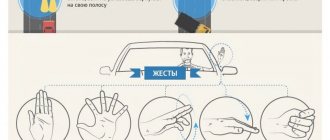Being able to read body language is one of the skills that will help you better understand your interlocutor. Body language will tell you more about your attitude towards a person than words. An observant interlocutor will catch the slightest changes in facial expressions, posture, and gestures. Knowing the differences between male and female gestures will help you understand them.
Usually it is difficult for people to restrain their emotions; they will still find a way out. Depending on temperament, this is expressed differently, but the facial expressions of even the most cold-blooded person will indicate a threat or hidden sympathy.
Kinesics
Kinesics is a branch of psychology that studies human emotional reactions from the point of view of his expressive movements (body movements). In this aspect, the following are considered as the main non-verbal means of communication: posture, expressiveness of gestures, facial expressions, gait features, gaze. It is believed that the information that the interlocutor wants to convey through speech may differ significantly from the feelings he actually experiences.
Pose
The postures a person takes during a conversation indicate his true intentions, more eloquently than gestures and facial expressions. Coping with your emotions is easy, but controlling postures when communicating is more difficult.
Modern psychologists divide postures into three types:
- Dominance - a person hangs over, tries to look down from above, sits leaning back, crossing his legs. Dependency – the individual lowers his head, sits with his knees tightly clenched, fiddling with his fingers.
- Closedness - the opponent clasps his fingers, closes himself by crossing his arms and legs, moves away from the interlocutor, and looks away. Openness - an individual who is inclined to communicate is distinguished by a relaxed posture, a wide smile, open palms, outstretched legs, and the torso turned towards the interlocutor.
- Confrontation is expressed by a raised chin, clenched fists, arms outstretched or placed on the hips, sides. Harmony is manifested in the speaker’s peaceful posture and good-natured gaze.
Gestures
With the help of these non-verbal elements of communicative communication, our ancestors have been trying to achieve mutual understanding since ancient times. Head movements and hand gestures can convey the emotional state of the interlocutor - his overexcitation, sadness, joy, anger, etc.
In the non-verbal sense, sign language is classified into the following types:
- modal – conveying the attitude of the conversation participants (trust/distrust, approval/disagreement, satisfaction/dissatisfaction);
- communicative - used for prohibitions, approval, farewell, greeting, attracting attention, etc.
- descriptive - express emotional coloring in the context of certain statements.
Facial expressions
Facial reactions are considered one of the main indicators of the true feelings of the interlocutor. According to research, if an individual maintains a still face, then information about his personal characteristics is lost by 15%. Psychologists have noted more than 20,000 different nonverbal interpretations of facial expressions. The main emotional states are:
- anger;
- fear;
- irritation;
- sadness;
- astonishment;
- joy;
- disgust.
When a person’s emotional state changes, the configuration of the entire face begins to dynamically change, mainly the lips, eyebrows and forehead.
Gait
The gait personifies the individual's position in life. By analyzing a person’s style of movement, one can judge the characteristics of his character, age, well-being and even profession. By the dynamics, rhythm and amplitude of the step, psychologists learn about such states as pride, suffering, illness, anger, determination, happiness, etc. A “light” gait indicates high spirits, joy, and self-confidence. “Heavy” – typical for gloomy people who are despondent or in a state of anger. “Sluggish”, “sluggish” - happens in suffering, insecure people.
Sight
Eye contact is a non-verbal signal that is the most important element in the art of communication. A direct, interested look endears the interlocutor and arouses sympathy. Looking too long is perceived as a challenge, excessive interest of the interlocutor. A short one, on the contrary, gives reason to believe that the opponent is insincere and is hiding information. It is considered optimal to exchange glances for 10 seconds.
It is also worth taking into account the national factor, for example, Asians (Japanese, Koreans) do not often look at faces, Europeans are distinguished by their direct gaze. Depending on the specifics, psychologists distinguish the following types of views:
- social – typical for secular, relaxed communication;
- business – used in a working atmosphere (when concluding business contracts, interviews, etc.);
- intimate – personifies interest, love, etc.;
- a sideways glance may indicate hostility, envy, criticism, or suspicion.
The eyes are capable of transmitting the most subtle signals of an individual's emotional state. Constriction/dilation of the pupils occurs in a person at an unconscious level, depending on his mood and state of the body. An excited person interested in something will have pupils dilated 4 times. A gloomy, depressive state leads to constriction of the pupils.
Difference between male and female gestures
Psychologists emphasize the difference between female and male gestures. This is due to the characteristics of the female and male psyches and is due to the difference in the nervous systems.
Women's gestures and facial expressions are more open and passionate, and easier to understand. Women are freer to express emotions, but unlike men, non-verbal communication is aimed at demonstrating weakness, insecurity, femininity and sensuality.
A man's body language is calmer and more confident; he is less likely to show strong emotions and imbalance. On the contrary, the goal is a demonstration of strength, self-confidence, and power. Male behavior is more dominant, which is inherent in nature.
Let's look at the difference between women's and men's gestures using examples of messages.
Nonverbal signals as the only means of communication
The importance of non-verbal communication cannot be overestimated - it remains the only means of exchanging information in cases where:
- people do not know each other's language even at a basic level;
- people do not have the physical ability to make sounds.
If in the first case it is subsequently possible to establish a higher level of communication through the gradual study of each other’s languages, then in the second, various types of non-verbal communication come to the fore and become the only possible means of contact.
In situations where people who are physically capable of producing sounds find themselves in an environment that does not allow them to pronounce these sounds, it is the tools of nonverbal communication that come to the fore. These signals are used in scuba diving (dive signals), in noisy rooms (rolling shops, engine rooms), while hunting, and when participating in hostilities (ambushes).
The history of the emergence of nonverbal means of communication
Nonverbal behavior as a set of gestural and figurative expressions through the body arose at the dawn of humanity, when language as a means of communication had not yet been invented, and communication between individual representatives of the tribe was carried out precisely through nonverbal behavior.
It was possible to convey information through primitive gestures, and non-verbal means of communication coped with the task that ancient people needed to solve perfectly. They pointed to prey and fellow tribesmen with their hands, depicted simple phenomena - rain, thunderstorms, mimicked anger, threatened, grinning and baring their teeth.
An excellent example of primitive nonverbal behavior is the communication of dogs. Dogs almost never bark when meeting - they communicate by changing their gait, posture, level of tail movement, grinning or lowering their ears, and the information they receive is enough for them to correctly assess the situation and the status of their interlocutor.
Forms of verbal communication and barriers are not his way
When communicating verbally, we can use different forms and styles in order to convey certain information in a specific context and color. This can be clearly seen in the styles that are used in literature:
- Journalistic - the main goal of such a speech is to convey to people the idea, the essence of what happened.
- Scientific – distinguished by logic and clear statements using terminology and complex concepts.
- Official business is the dry language of laws, where everything is precise and without any epithets.
- Artistic - here it is possible to combine any words and word forms, jargons and dialect (dialectisms), speech is filled with unimaginable images and colors.
- Conversational - characterizes both individual dialogues in works and our communication with you when we meet an acquaintance.
Speech interaction can be divided according to the number of people who take part in it:
- Monologue (one person): speaking - at meetings in front of someone or reciting a poem in front of the class;
- report - important information, usually supported by numbers;
- report - similar to a report, but provides more extensive information and description;
- lecture – presentation of useful information to the audience.
Dialogue (two or more people):
- ordinary conversation - exchange of greetings and thoughts;
- discussion – discussion of a topic where the interlocutors represent different points of view;
- dispute – here, too, there are two positions between which the resulting conflict needs to be resolved;
- a debate is a discussion within the framework of science;
- interview - a conversation during which the employer thinks about whether to hire a person.
Despite the fact that we communicate in the same language, various barriers to verbal communication may arise:
For example, phonetic. The interlocutor may have a speech impediment, unpleasant diction, choose an unusual intonation, sprinkle words with parasites, etc... Semantic interference grows between people from different countries, with different mentalities, or even when raising children in different families. A logical barrier is if the interlocutors have different types of thinking, levels of development and intelligence. A stylistic barrier is that the interlocutor incorrectly builds a chain of verbal communication to convey information
First we need to attract attention to what we want to say, to interest. Then lay out the basic information; answer questions that your opponent may have
After this, give him time to think about it so that he can draw conclusions or make a decision.
Mutual attraction
Touch
© Getty Images Pro
Touch is one of the main ways to communicate your feelings through body language. And here we will talk less about intentional touches, but about those that happen as if by chance.
If you notice that during a conversation or some kind of joint activity, you constantly touch each other’s knees, arms or shoulders almost imperceptibly
, there is definitely a lot of sexual tension and mutual attraction between you.
You are so attracted to each other that it seems as if an invisible force is attracting you like a magnet.
Trying to impress each other
Trying to impress another person indicates a desire to be liked and noticed.
If you notice that a person is always preening, trying to make you laugh, bragging about some achievements
, then he is doing this because he really likes you and wants to impress you.
And the more we want to impress someone else, the more nervous we become. A trembling voice, fidgeting and excitement in your presence reveal a person’s strong emotions and speak of a strong attraction.
Don't pay attention to anyone else
One of the clear signs of unspoken attraction is a complete loss of interest in others.
. In other words, you stop paying attention to the people you usually spend time with.
When we are in love, we direct our attention to the object of our love, completely immersing ourselves in conversation with each other.
It seems like nothing matters anymore except you, and time just disappears when you're around.
Insane attraction makes you simply not notice what is happening around you.
Remembers the smallest details about you
When someone likes us, that person wants to know everything they can about us. He will look for opportunities to talk to you.
If you notice that a person remembers little things that you accidentally mentioned and brings up this topic later in communication with you
, this is a great sign.
Maybe he remembers that you are allergic to cats or the fact that you don't like dark chocolate. All this hints that the person is paying attention to your words and subconsciously imagines you together.
Smiles and laughs often in your presence
Have you noticed that a person is trying to make you laugh or are you doing the same?
Laughter and smiles in the presence of the object of your attention are one of the main signs that the person is trying his best to impress you and is enjoying every minute with you.
This is especially true for men. When they like someone, they try to make the girl laugh because they want to see her happy
.
They want her to enjoy his company and feel comfortable around him.
Changes voice
When we feel a strong attraction to a person, we automatically change our voice, sometimes without noticing it. Men tend to try to lower their voices to appear more masculine.
Experts from the University of Sussex in the UK, the University of Wroclaw in Poland and the University of Social Sciences and Humanities also in Poland
conducted a study in which they listened to the voices of 30 people while speed dating in a cafe.
While listening to the recordings, they noticed one surprising detail: both men and women lowered their voices slightly when they really liked someone
.
A similar phenomenon can be observed with children. When we talk to someone we like, we subconsciously change the intonation of our voice to become closer and show our affection. Moreover, it creates sexual attraction between people.
Are you comfortable staying silent with each other?
This is one of the most underrated signs of magnetic attraction because we usually look for more obvious signs like smiling and touching.
However, comfortable silence is perhaps the most powerful
. This is extremely rare, and we will not feel comfortable if there is no physical or psychological connection between us.
This is also one of the clear signs of sexual desire.
between people when we are able to feel true intimacy without words.
Nonverbal communication body signals. Nonverbal communication signals. What are they?
We talk a lot about gestures. But gestures are only a part of all non-verbal signals, numerous, but not the only one. In order to better understand body signals, we need to know what else, besides gestures, we can see when communicating with a person. All signals that we receive from our interlocutor can be divided into certain groups. Today we will learn more about body signal groups.
All nonverbal signals can be divided into six main groups:
- Facial expressions
- Gesticulation
- Body movements
- Pose
- Distancing
- Intonation
Facial expressions
Facial expressions include various signals that we observe on a person's face. Blinking, smiling, raising eyebrows, grinning, squinting and much more make up a huge arsenal of facial signals of the body. We will also include psychosomatic processes that relate to our faces as facial signals: redness, pallor, blush.
Gesticulation
We will include all manipulations performed by the hands as gesticulation: clenching the hands into a fist, showing fingers, positioning the hands, the dynamics of gestures (waving the hands, tapping the fingers on the table) and much more. For simplicity, we will also include various movements associated with the hands, but not typical gestures, as gesticulation: holding various objects in the hands (cigarettes, papers), fiddling with small objects (pencil, handkerchief).
Body movements
Body movements include actions that we perform with any part of the body other than the hands and face. Puffing out your chest (like knights and wars in movies), stomping your feet, crossing your legs, shrugging your shoulders.
Pose
By posture we mean the general position in which a person is located and the change in this position over time. For example, a person who stands hunched over, huddled, with his head strongly lowered and his arms pressed as close to his body as possible is in one position. But a person standing straight, open, with his head held high has a completely different posture. Turning the body when speaking also refers to posture.
Distancing
Distancing, although close in meaning to posture, still has a special meaning, all other things being equal, so we will separate it into a special group. By distancing we mean the distance (distance) that a person maintains in relation to other people, as well as animals, objects, and a change in this distance (approaching a person, moving away from him).
Intonation
Intonation is all the elements of our speech, with the exception of the content of the speech itself: the volume of the voice, the placement of pauses, the tone of speech. We will also include various non-verbal speech signals (sighs and breath-holds, smacking) to this group of signals.
Any body signals belong to the above groups. However, there are types of nonverbal signals that cannot be clearly classified into one of the groups, and such signals can be considered borderline. As you can see, not everything is so simple, but it is all the more interesting to study all this. We will gradually study these signals.
What can gestures tell us?
Sometimes even in a persuasive speech we can feel some kind of catch. Intuition suggests that this person should not be trusted.
Hand gestures and body language - their meaning in different situations may not be the same.
Openness
The location is indicated by the “mirroring” of gestures and facial expressions. We unconsciously repeat the movements if the interlocutor impresses us. Also watch your palms: open, upward-pointing palms indicate an attitude towards you. A favorably disposed interlocutor will gradually reduce the distance between you, intuitively wanting to be closer to a pleasant person.
Closedness
The interlocutor expresses distrust with monotonous actions: scratching his head, shrugging his shoulders. He will avoid direct eye contact and look at your hands, out the window, or at his plate. Resistance and unwillingness to contact can be shown by crossed arms over the chest or crossed legs - a clear physical barrier. It will be difficult to win your interlocutor over to your side.
Other signals:
- Touching the mouth
- Clenched jaws
- Frown eyebrows (a sign not only of closedness, but also of hidden aggression)
Sexual interest
Scientists say that women are more likely to give these types of signals, while men are usually restrained in showing their emotions.
A long and deep gaze is especially clear about sexual sympathy on the part of a man. If a man lingers with his gaze for a long time and strives to establish eye contact, rest assured that he is interested in you. Also pay attention to his belt: the man hooks his thumb into a belt or trouser pocket. May also “brush off” non-existent specks of dust from a shoulder or arm to show confidence. Everything in a man's body language will signal: he's out hunting!
A woman in such a situation behaves more flirtatiously: straightens her hair, tucks a lock of hair behind her ear, throws her hair back, laughs feignedly or opens her mouth languidly. Even the look will not deceive you. A little timid, quickly changing his direction, enlarged pupils. Also, a woman may strive to expose some areas of her body, as if by accident: neck, wrist, shoulder, or beautifully tilt her chest.
An expressive sign is stroking the interlocutor and tilting the head to the side when talking.
Be careful, they are lying to you!
A smile does not always indicate openness. A sincere smile is paired with a warm gaze; small wrinkles should appear near the eyes. If the look is cold, know that you are being deceived.
Take a closer look:
- grin;
- sudden slowing of speech;
- scratching the upper eyelid;
- gesturing in front of the face.
Aggression
Aggression is signaled by a harsh and raised voice and gestures. A person can “chop” with one palm against the other. This symbolizes that he wants to defend his position at all costs.
Evidence of aggression:
- clenched fists;
- hands behind your back.
Nervousness
Raised eyebrows and constant nodding can be signs of discomfort. The interlocutor may doubt your words or, on the contrary, worry about your opinion of him.
Gestures of nervousness:
- swallowing and movement of the Adam's apple
- arms crossed, or one hand resting on the other
- rapid breathing
- lip biting
- cowering (not just nervousness, but a desire to defend oneself)
- constant touching of your purse, jewelry, hair, clothes
Boring
A clear sign would be yawning and stamping one foot. The person can't wait to end the conversation. Looking at your manicure, jewelry, and constantly looking at your watch will indicate disinterest.
Signals of boredom:
- rubbing eyes
- drooping corners of the lips without a hint of a smile
- engaging in an extraneous activity - drawing in a notebook, folding a napkin
- dull look
I trust you
If the interlocutor tilts his head in your direction or even leans forward with his whole body, this may mean that he is interested and ready to listen carefully to all your proposals. A bright sign is the so-called “steepling”, connecting the fingers of different hands as if into a sphere. Also, this sign speaks not so much about trust, but rather about the fact that the person is close to trusting you.
In negotiations, a good signal would be to unbutton the top buttons of your shirt or take off your jacket and stretch your legs under the table. Translated from sign language, this means that the interlocutor is ready to abandon formalities and move on to a constructive conversation.
You are being evaluated
If a person wants to analyze you, he may lean back in his chair or touch the back of your neck, or keep his hands in his pockets.
The most common signals:
- scratching the chin
- a man takes off his glasses and puts them to his lips
- hand on head with elbow out to the side
Simple signals
These include manifestations of vivid emotions that cannot be hidden. This could be arrogance (an arrogant look, a head held high), rage (a wild look, a fast gait, quick gestures), sadness (dropped shoulders, a dull gaze, signs of nervousness). The more expressive and stronger the feeling, the easier it is to recognize it on an intuitive level.
What is verbal communication
Under Verbal Communication
the sound language familiar to us is understood.
Human articulate speech is a special information system that is inaccessible to most animals, but has become the main means of communication for people. The concepts of “language” and “speech” seem to be synonymous, although science still distinguishes them. Language is a specific set of signs and rules for their coordination and combination. And speech is the very ability to convey information in a sound (and written) way, as well as a specific sounding “work” (conversation, speech, etc.).
Verbal communication can be carried out through the mutual exchange of information, and then it is a dialogue. It can also be carried out in the form of a monologue - a speech by one person. At the same time, the fact of communication is always realized by all its parties. That is, in order to say something in words, you need to really want it. This constitutes one of the main differences between verbal and nonverbal communication.
Features of nonverbal communication
Nonverbal communication is a situational reflection of people’s personal characteristics: mood, emotional background, attitude towards others and the topic. This communication is involuntary and spontaneous, it is difficult to divide it into individual elements (postures, facial expressions, olfactonics), this is the key feature of nonverbalism. Gestures, intonation, gaze are difficult to study or edit; it will take years and decades. But even trained people can be caught lying when one part of communication does not match another. Sign language is trusted more; it is perceived at the level of intuition.
Open posture in negotiations
Nonverbalism is an important element of communication, carrying 60-80% of information with the body, only 20-40% of communication is realized in words. It is worth closing your eyes and hiding your hands if you need to hide insincerity - this was the conclusion of one observant English court official.
Communication nonverbal communication
Nonverbal means of communication are a system of signs that complement, enhance or replace speech:
- Akulesika. Messages are conveyed through glances. They depend on the frequency and duration, intensity of contact (closely or sliding). The gaze reduces psychological distance or is perceived as a threat.
- Kinesics. Combines looks, facial expressions, postures, gestures, movements of sociocultural and physiological origin.
- Tactile behavior. The communication method is based on touch (ritual, love, professional, friendly) to strengthen or weaken communication processes.
- Chronemics. Use of time in nonverbal communication. For example, in the United States being late is considered disrespectful, but in Latin America this situation is common.
- Proxemics. Relationships are built taking into account distances and territorial locations.
- Sensory. The attitude towards an individual is based on perception by the senses (sensation of sound, taste, warmth of the interlocutor).
- Paraverbal communication is determined by vocal timbre, rhythm, and intonation when transmitting information.
Important! Specialists in nonverbal psychology combine the listed types of communication into various forms of information transmission: sign-symbolic, optical-kinetic, tactical and phonation (sound)
Types of nonverbal means. Types and types of nonverbal communication
Nonverbal communication and its types go back to ancient times; most nonverbal means are innate. There are three main types of nonverbal communication: facial expressions, gestures and clothing.
- Facial expressions are movements of the facial muscles that have little in common with physiognomy.
- Appearance can tell a lot about a person even before he says anything.
- Nonverbal communication and its types convey up to 95% of information. These are voice, appearance, gestures and posture.
There are several types of nonverbal communication
- Paralinguistics - speech additions, melody, timbre, rhythm and strength of voice, articulation activity. Paralinguistic communication is the transmission of information through voice.
Psychological and paralinguistic features of nonverbal communication are the perfection of speech. Characteristics of speech that will allow you to come to mutual understanding between partners:
- Accuracy.
- Euphony.
- Conciseness of statements.
- Clarity.
- Logic.
- Simplicity.
- Wealth of vocabulary.
- Liveliness.
- Purity.
- Right.
Speech reveals social status and allows you to assess the personality of the interlocutor, his temperament and character. By improving the forms of speech, a person will get rid of communication problems.
- Kinesics – gestures, body language, eye expression.
The kinetic features of nonverbal communication lie in the visual perception of the interlocutor’s body movements. Kinesics includes expressive means of movement: gait, gestures, posture, facial expressions, gaze.
The pose demonstrates the relationship between a person’s own status and the status of those present. People with higher status sit in relaxed positions.
Whether the interlocutors feel comfortable or uncomfortable in each other’s company is determined by their gaze. Gaze and eyes convey precise signs in interpersonal interactions. Depending on a person’s mood or his attitude to what is happening, the pupils contract and dilate.
- Chronemics is the time that communication takes.
The use of time is one of the main components of non-verbal communication: punctuality at the everyday level indicates self-discipline and respect for others. The desire to say as much as possible in a short period of time indicates a lack of self-confidence: a person who is accustomed to being listened to speaks at a pace that is convenient for himself.
- Haptics is interaction between people through touch, tactile contact.
- Gastics are communication signals transmitted through food and drinks.
- Proxemics is the position of the interlocutor in space. This is the position of the body during contact between people, the distance between them, the orientation relative to each other.
Proxemic features of nonverbal communication are the distance between people during contact and the orientation of you relative to your interlocutor in space. The person who comes closest to him is the partner he likes.
- Actonics – human actions as signals in communication.
How to read gestures: description and pictures
Human gestures are a reflection of the subconscious perception of the situation . The words we speak are often tightly controlled, especially if the meeting is of a business nature. Controlling gestures and facial expressions is much more difficult; this skill is only possible for people with incredible self-control.
Knowing body language will help in that situation if you intuitively feel that the words and external friendly attitude are at odds with the person’s real intentions. It can be given away by impulsive gestures, facial expressions or a special posture. The ability to correctly interpret the signals sent by the interlocutor’s subconscious is the basis of effective communication.
Open
Open gestures, the main purpose of which is to demonstrate goodwill and a friendly attitude, are characterized by smoothness and movement towards the interlocutor.
When meeting, pay attention to the way you greet . A person who is friendly and respects you will strive to extend his palm for a handshake first or at the same time as you, and will not quickly withdraw his hand. Another sign of respect is an outstretched arm, but bending your elbow and trying to force you to reach out to your interlocutor can express some disdain.
Demonstration of open palms and open arms, movements reminiscent of a desire to hug the audience, indicate the absence of malicious intent and a willingness to make contact.
Tilt of the body towards the speaker and wide open eyes are signs of interest. Pay attention to the position of your feet: the toes of the shoes of a person ready for contact will be directed in your direction. During business meetings, an unbuttoned jacket creates a light atmosphere and a willingness to compromise.
When speaking in front of a large audience, mentally draw a line vertically dividing your body in half. Try to keep your hands moving smoothly without crossing this line. This will help win over your listeners.
Closed
Using closed gestures, a person subconsciously tries to protect himself from the influence of his interlocutor, seeks to defend himself and close himself off. He is not ready to make contact, is not ready to perceive information and wants to leave as soon as possible.
One of the most common closed gestures is crossing your arms over your chest. This gesture is often used by a person who listens to criticism or negative assessment addressed to him and is not ready to accept it.
Fingers in a lock express internal distrust of the words of opponents, internal disappointment with what is happening, or an attempt to hide some information. Arms crossed behind your back or palms folded on top of each other indicate high self-esteem and a sense of superiority over others. These same gestures can help in situations where you lack self-confidence .
A closed person accompanies all your actions with a special tenacious gaze: he is constantly tense and watches you, all the time expecting an “attack”.
Erotic
Men and women express sexual interest in a partner differently . Women, when an object of sympathy appears, can begin to carefully adjust details of clothing, fidget with jewelry, touch hair and twirl curls on their fingers. The voice becomes deeper and the general behavior becomes flirtatious.
Expressing sexual interest, a woman may “shoot” her eyes or stare into your eyes for a long time. Flirting on her part can be evidenced by a slightly open mouth, swaying her hips while walking, unobtrusive touches to a man (taking him by the elbow, putting his hand on his shoulder while talking).
A man, when a woman he likes appears, tends to take an open position. His legs are spread wide, his hands are tucked into his trouser pockets, or his thumbs are in his belt loops, as if paying attention to his groin area. A man can “play” his muscles, adjust his jacket or tie.
Sometimes excessive gesticulation becomes a sign of agitation and excitement.
deceitful
To identify a deceiver, you should be very careful, trying to catch the minimal signals that indicate his lie.
Such signals include many gestures associated with touching the face. A liar instinctively covers his mouth with his hand or rubs the tip of his nose. Fake coughing during speech can also signal an attempt to hold back the words spoken. Frequent blinking and rapid eye movements can also give away a deceiver . Avoidance of direct eye contact, looking away to the side and down should also alert you.
Pay attention to the left half of the person’s body - it is the one responsible for the subconscious manifestations of lies. A left hand dangling limply in the air or making frequent chaotic movements may indicate an attempt to hide information.
Thoughtful
This group of gestures will tell you that the interlocutor is at the mercy of internal thoughts and dreams and is not yet ready to perceive external information.
Evidence of thoughtfulness can be hands placed on the forehead and temples, or scratching the back of the head.
The pose in which a person sits with his head resting on his hand also speaks of deep thoughtfulness. A person in this state may be so immersed in his thoughts that he will not be able to listen to you and concentrate on what is being said.
Distrustful
If, during the process of telling a story, you notice that the listener crosses his arms or legs, rubs his ears, or puts his hands to his lips, this indicates a skeptical mood regarding your words. A slight negative shake of the head can also indicate distrust .
A distrustful person will hide his eyes and grin at one corner of his mouth. This way he will let you know that the words seem funny to him.
Having noticed these signals, change your communication tactics: start telling the truth or provide stronger arguments in favor of your position.
Recommendations for men
If you smile too often, you may be perceived suspiciously, therefore, as for the opposite sex, it is important to be able to laugh sincerely. If you remember, the psychology of the weaker sex is such that they easily read non-verbal information; this skill is inherent in nature so that the mother can recognize the needs of her baby
Therefore, the most basic recommendation is to be sincere. When communicating, show as many open gestures as possible, which indicate a willingness to be honest and open. For example, do not hide your palms, do not cross your legs... Do not focus your attention on other girls, otherwise the interlocutor will catch your gaze, which will not have a positive effect on the relationship . There is a gesture that indicates your self-confidence and inner strength, it is called the “pyramid”, this is when the fingertips and palms are joined together. So, if you want to conquer your interlocutor and not give away your excitement, use it during meetings. To make you more inclined to have an intimate relationship, you can use this technique: place your index finger on your lower lip, hold it for a couple of seconds, then lightly tap the lip a couple of times and remove it. This will reinforce the message and desire to move to a new level in the girl’s subconscious. Listen carefully, try not to interrupt, lean your body forward slightly to demonstrate your interest. You can put your thumbs behind the belt, and if you are sitting, keep your hands on your hips, or stretch your legs forward, this will create a feeling of your disposition towards the girl, as well as a manifestation of love and a demonstration of masculinity.
What is sympathy
Sympathy is fascination and an emotionally positive attitude towards a person. It can manifest itself in the form of attention, desire to communicate and recognize the identity of another. Touch also plays an important role, because if you like a person, then you want to touch him all the time, touch him carefully, remove invisible specks of dust, hug him.
Tactile sensations are extremely important in any relationship. They help to quickly establish trusting relationships, because the first feelings a person experiences are the mother’s touch. They give a feeling of security, trust and safety.
Unconscious touches, for example, to one’s own hair or clothes, can also reveal sympathy. The desire to look perfect can indicate interest in another person, a desire to please him.
How to learn to correctly recognize nonverbal signals
By learning to correctly interpret other people's nonverbal signals, you can expand your capabilities, raise nonverbal communication with your interlocutors to a new level, and also learn to recognize attempts to manipulate you.
In order to improve non-verbal communication skills, try to absorb when communicating, notice not only some noticeable, “large” gestures, but also note small ones, perceive the entire palette of human motor skills: facial expression, posture, posture, finger movements and gaze, shift intonation. This will allow over time to cut off superficial, conscious gestures of the interlocutor, identifying micro-expressions and noting signs of deception or unconscious lies. By noticing the broad gesture of your hands, you will also learn to notice the rapid licking of lips that betrays excitement, and then non-verbal communication with people will turn into an exciting ride in which attempts to manipulate you will be broken by your ability to recognize them and avoid them.
Content
- Why don't men and women always understand each other?
- Nonverbal cues we use most often
- These eyes are opposite
- Choose a position that is more comfortable...
- Let me touch you
Hello, friends! Tell each other everything without saying a word... Is this possible? It turns out that our views and gestures can be much more eloquent than any phrases. With their help, you can express a good attitude, demonstrate your interest, desire to be together, and even confess your love.
But what if you don’t understand how to correctly interpret the signs that your interlocutor sends you? Maybe right now they are desperately signaling tender feelings to you, but you do not attach any importance to this, and continue, as if nothing had happened, to discuss the latest news. Or it could be the other way around. They promise you eternal love and the most sincere and pure intentions, but at the same time they non-verbally convey that you are of no more interest than last year’s snow.
In order not to miss an important message, it is worth learning more about what constitutes nonverbal communication between a man and a woman. Having mastered its basics, you will not only accurately read the message addressed to you, but will also be able to express your feelings using gestures, postures and facial expressions. And the world bestseller “Body Language in Love”, created by wonderful authors Allan and Barbara Pease, will help you with this.
Basic elements of nonverbal communication
Studying nonverbal communication will make our everyday communication more effective
The ability to read between the lines is very important in the process of building a behavioral strategy, since various manifestations of non-verbal exchange of information can be the key to many mysteries and secrets. It is believed that not a single person is able to completely control the movements of facial expressions and gestures during a conversation. Even weak signals instinctively given by the interlocutor will help his opponent draw the right conclusions
Behavior: By observing changes in a person's behavior depending on the situation, a lot of useful information can be gleaned. Expression – expressive means: gestures, facial expressions. Tactile interaction: touching, shaking hands, hugging, patting on the back. Gaze: duration, direction, change in pupil size. Movement in space: gait, posture while sitting, standing, etc. Individual reactions to various events: speed of movements, their nature (sharp or smooth), completeness, etc.
Modern scientists have nevertheless been able to develop special techniques that make it possible to mislead even sign language experts. Having thoroughly studied some non-verbal techniques, you can use certain elements to convince the interlocutor of the sincerity of your intentions. But this is quite difficult, since non-verbal accompaniment of speech is activated during dialogue by our subconscious.
Gender signals of attraction
It should be noted that the set of female and male sympathy gestures is different. Let us highlight those that are most characteristic of men, and describe those that are characteristic of women to a greater extent.
Male nonverbal signals
Men are more open in expressing their feelings than women.
- A man, examining the object of his sympathy, looks him from head to toe. He seems to notice the general attractiveness of the woman, then his gaze drops lower, lingering on the chest and hips. With this look, a man sends a signal that the woman is worthy of his attention.
- Putting your thumbs in your belt is a characteristic gesture of a man who likes a woman. Thus, he focuses attention on his genital area.
- The legs of a man, in whose field of vision there is a woman he likes, are always widely spaced, no matter whether he is sitting or standing. Thus, he subconsciously invites the woman to evaluate his “dignity.” This is a gesture of a self-confident man, in front of whom is an object that is interesting to him from a sexual point of view.
- Demonstration of a masculine figure is an important signal by which one can recognize that a man is interested in a particular woman. Usually a man tries to suck in his stomach or straighten his shoulders (and before that he was sitting in a hunched position) - this means that he has reacted to the object of sympathy.
- The voice of a man who is attracted to a woman can change depending on the presence of other men in close proximity to the object of his sympathy. With them he can be quite harsh, but with a woman, on the contrary, he will speak brightly and colorfully, trying to demonstrate his talents as a pleasant interlocutor. His voice becomes velvety and soft.
Women's nonverbal cues
Women's visual language is different from men's; women are more creative.
- Women quite often show their wrists to the object of their affection to show that she has soft and attractive skin. Since ancient times, this area has been considered one of the most erogenous zones. For example, she may hold a cigarette at neck level while smoking, exposing her wrist towards the man she likes.
- Women often look furtively; they were the ones who came up with the “shooting eyes” gesture. Usually a woman watches a man she likes secretly and from the bottom up. She seems to be gaining courage to look the gentleman in the face, and at the same time desires the moment of meeting two glances, expecting that the man is also looking at her.
- If communication takes place in an informal setting (bar, disco), a woman can behave more openly. She tries to attract the attention of her chosen one, choosing a pose in which her legs will be clearly visible. A woman can swing her shoe, or cross her legs in such a way that they are in the plane of one line, directed towards the object of interest. Sometimes a woman, knowing that the man she likes is looking at her, can slowly intertwine her legs and return them to their original position.
- If a woman changes the timbre of her voice to a lower one, this is a sign of sexual attraction to a man. The pace of the woman’s speech slows down, so she tries to artificially create a situation with the help of her voice so that the interlocutor understands her better. Very often, melodious notes appear in the voice, or, conversely, it begins to tremble, which can be regarded as a sign of excitement due to the close proximity of the object of attraction.
Proxemics
Proxemics is based on the construction of interpersonal relationships between individuals using spatial constraints. From the point of view of proxemics, nonverbal means of communicative communication include:
- Distance
- Orientations
- Distance
Psychologists have established several norms of “proximity” (spatial distances):
- Intimate – intended for the closest people (0-45 cm)
- Personal – allowing you to communicate with mutual friends (45-120 cm).
- Social – recommended for formal communication with unfamiliar people.
- Public – allows you to refrain from communication or speak in front of an audience.
An interlocutor who adheres to the above norms not only makes a favorable impression, but also feels more confident and comfortable.
These means of communication may vary depending on the nationality, social status and country of residence of the individual. Gender, age and personal characteristics of a person also matter.
Orientation
Such a proxemic component as orientation conveys various shades of a person’s emotional state, in terms of the angle of communication and the direction of the partner. Turning the toe and body can signal a person's attitude towards the opponent. A negotiator who decides to end the discussion involuntarily turns his body towards the exit. In business communication, seats at the negotiating table also matter:
- on the contrary, it characterizes a competitive-defensive position in which participants rigidly defend their point of view;
- on the one hand, it is the most convenient option for jointly discussing problems and developing a common solution;
- corner location - allows for a friendly and relaxed conversation;
- diagonally - the position indicates a lack of interest and reluctance of the participant in the conversation to interact.
Meanings of nonverbal signals of sympathy
Gestures of sympathy are very diverse and interesting. And although each person has a different set of such signals, one can easily identify common types of body movements, facial expressions and glances that signal sympathy from the opposite sex.
Touching hair and clothing items
In an effort to attract the attention of the opposite sex, both women and men begin to preen themselves in the field of view of the object of sympathy. Men can straighten their tie, cufflinks, straighten their shirt or jacket, brush away a non-existent speck of dust, or remove a watch bracelet. Women touch their hair for no apparent reason, and begin to correct their makeup in the presence of a man: for example, they can put on lipstick. It is thanks to these types of non-verbal signals that the expression “I don’t know where to put my hands” came into being.
Pose
The presentation of body position gives an idea of the person’s attitude towards the interlocutor. If a man or woman stands with his body turned towards the interlocutor, in addition, the toe of the foot is pointed in his direction - this may indicate a feeling of sympathy.
Sight
Gaze is one of the key and most unambiguous elements of nonverbal contact. Typically, the eyes of a person interested in the interlocutor are open wide, the pupils are dilated, and no hostility or other negative emotions are visible in the gaze. If the object of sympathy is “hooked”, then the number of views increases. This is what unites the male and female interested gaze. We'll talk about the differences a little later.
Smile
The person who smiles at you is not always interested in you sexually. Perhaps he is simply being friendly, or he needs something from you, and he is trying to win you over. But a smile that means sympathy is easy to read. Firstly, it is always symmetrical - the corners of the lips are raised the same distance upward. Secondly, with sincere sympathy, a person smiles not only with his lips, but also with his eyes. If a man or woman openly laughs in each other's presence, showing their teeth, this also indicates sympathy between them.
Reducing the distance
Both men and women always try to close the distance between them in order to be able to touch the object of their sympathy. The desire to invade your personal space always indicates interest in you.
Nonverbal communication examples from life. Types of nonverbal means
A person is designed in such a way that he cannot fully control his own “body language”. It is possible to restrain nonverbal impulses only for a short time. For example, a speaker speaking in front of an audience may seem bright and confident, but in real life he may be quiet and shy.
Verbal and non-verbal communication are 2 halves of one whole, the role of which in the life of each person complements each other, since words cannot always accurately convey a thought.
The meaning of what is said can change dramatically, depending on the tone or facial expression of the interlocutor.
A person can read non-verbal signs intuitively. Therefore, a situation often arises when, after or during communication, distrust of the interlocutor appears for no apparent reason. This happens because the brain picks up not only words, but also the entire range of non-verbal signals. The only problem is that this happens on an unconscious, instinctive level.
Studying “body language” allows you to identify lies in your interlocutor’s speech, find hidden motives and true feelings. Nonverbal means are divided into several types.
Kinetic
This group includes human gestures, facial expressions and facial signals, gait features, the posture in which the person is, and body movements during communication. Recognition of kinetic signals is complicated by the fact that in many countries or cultures there is too bright gestures, or, conversely, it is not customary to show one’s temperament.
Also, the manner of behavior consists of the characteristics of a person’s character, his upbringing, and existing complexes. All this proves that it is impossible to try to “read” a person based only on one type of non-verbal signs.
Tactile
This type includes various kinds of touches, ranging from a banal handshake to kisses, stroking, encouraging pats on the shoulder. Based on tactile signals, even a person who is completely unfamiliar with the concept of “body language” can often accurately determine the nature of personal relationships or the status of the interlocutor in conversation and in life.
Visual
The importance of eye contact is difficult to overestimate when speaking. It matters whether the interlocutor is able to look into the eyes or tries to look away, where exactly he looks and how.
Are there exclusively male or female gestures?
Research shows that gestures and movements can be given gendered meaning, resulting in stereotypes of typically male or typically female behavior.
In our imagination, we imagine a set of signals that, in our opinion, indicate masculinity: a position in a chair (lounging a little, legs spread wide), a full-length pose - standing firmly on both legs, without creases in the arms. Speaking about a man, we can imagine how he can hit the table with his fist and shows obscene gestures. Imagining a true woman, we visualize a soft and languid voice, smooth movements, sitting cross-legged, walking on the hips.
Researchers emphasize that sign language is determined not only by gender differences, but also by nation and level of development of society. Behavior can also be influenced by status and position in society, a set of social roles, profession, personality type, sense of orientation and other factors. Therefore, it is wrong to talk about the existence of exclusively male or female ones, since behavior is influenced by many other reasons besides gender.











